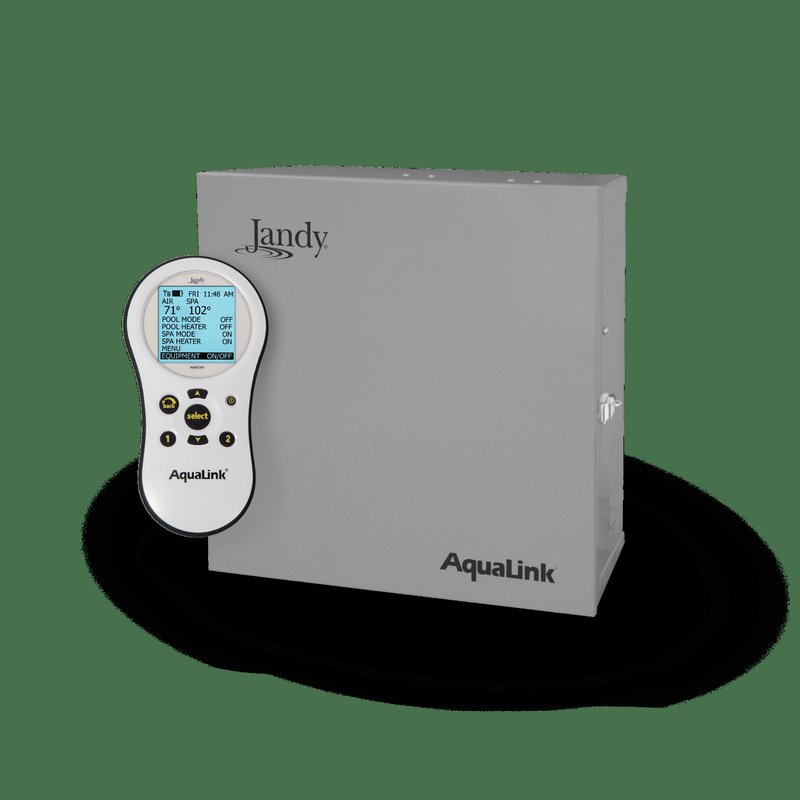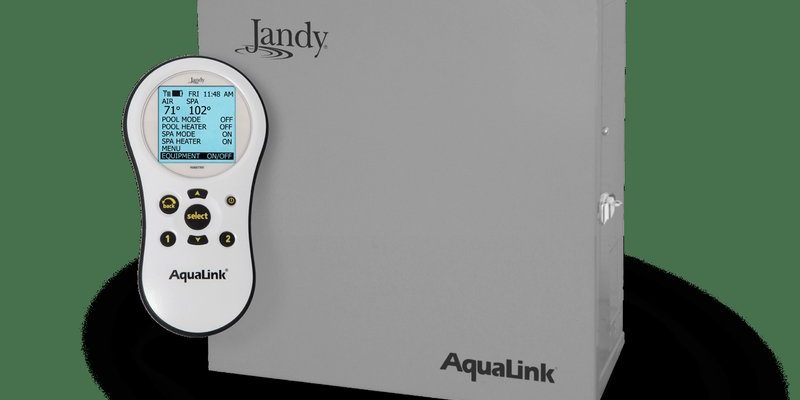
That’s exactly the promise of Jandy pool remotes. These handy devices—made by Jandy, a well-known name in pool automation—let you manage multiple pool features from a single control. It’s a little like having a magic wand for your backyard oasis. But here’s the thing: Can a Jandy pool remote really control your pool lights, heater, and pump together? Or are there limits that might leave you stuck pressing buttons and guessing? Let’s break it down step by step, so you know exactly what to expect—and how to get the most out of your pool remote.
How Jandy Pool Remotes Work: The Basics in Plain English
Jandy pool remotes are designed to make pool management easier, but the technology behind them can feel overwhelming if you’re new to pool gadgets. At its core, a Jandy remote acts like a central controller, sending wireless or wired signals to your pool’s control system. Think of it as the director in a play—giving cues, flipping switches, and making sure all the actors (your lights, heater, and pump) hit their marks at the right time.
The remote itself isn’t usually doing the heavy lifting. Instead, it communicates with a Jandy control panel, like the AquaLink RS, which is mounted somewhere near your pool equipment. This panel is really the “brains” of the operation. Whether you’re sitting inside using a handheld remote, or tapping buttons on a wall unit outside, you’re sending instructions to that main control box.
Most Jandy remotes can operate multiple functions: turning lights on and off, switching the heater up or down, or controlling pump speed. Depending on your exact setup and how everything is wired and paired, you can usually combine different actions into “scenes” or schedules. That means, yes—you really can control your lights, heater, and pump together, sometimes with just a single button press. But there are a few things to consider, like compatible models, syncing, and making sure everything is properly paired. More on that in a bit.
What Features Can Jandy Pool Remotes Control?
Let’s get specific. You might be wondering, “Will my remote handle everything, or just some stuff?” Here’s what most Jandy pool remotes can control, as long as your equipment is compatible and set up correctly:
- Pool Lights: Switch them on or off, and sometimes change colors or brightness depending on your light model.
- Heater: Adjust the temperature up or down, or switch between pool and spa modes if you have both.
- Pump: Start or stop your circulation pump, and with variable-speed pumps, change the speed or select presets.
- Other Features: Waterfalls, spa jets, pool cleaners, and even backyard landscape lighting—if they’re wired into your Jandy control panel.
The magic really happens when you combine these actions. Maybe you want to set the mood for a nighttime swim: Turn on the blue pool lights, crank up the heat, and ramp the pump to keep the water circulating. With a well-configured Jandy remote (like the AquaLink PDA or the iAquaLink app), you can hit one button and the system will do the rest.
However, the full range of control depends on your equipment. Super old pumps or off-brand lights might not play nicely. Also, some remotes (especially older models) are more limited than newer, Wi-Fi-connected ones. If total control is what you’re after, double-check that your equipment is all Jandy-compatible and that your remote is properly synced and paired to the controller.
Setting Up Your Jandy Remote: Pairing, Syncing, and Resetting
Here’s where things get a little technical, but don’t worry—I’ll walk you through it like a friend would. For everything to work together, your remote needs to be paired (connected) and synced (communicating properly) with your pool’s control panel. This process is a bit like pairing your phone with a Bluetooth speaker: easy if you know the steps, confusing if you don’t.
Most Jandy remotes use either a wireless signal (think handheld remotes or the Jandy AquaLink PDA) or they connect through your home Wi-Fi (like the iAquaLink app). To get started, you generally:
- Make sure your control panel has power and is in good working condition.
- Put your remote into pairing mode. (There’s usually a button combo to press—check your manual.)
- On the control panel, follow the reset or pair instructions to allow new devices to connect.
- Wait for confirmation—a beep, a light, or a message on the screen.
If your remote is sluggish or not controlling all features, you may need to re-sync or reset the remote. Honestly, battery issues are another common culprit—so if things get glitchy, try popping in a fresh battery before anything else. The whole code and pairing dance can be a pain, but once it’s set up, it’s smooth sailing for most users.
Pro tip: Keep your remote close enough to the pool equipment area, especially during the initial pairing. Wireless range and interference can trip things up if you’re too far away or have thick walls in between.
Common Problems and Troubleshooting With Jandy Remotes
Nothing kills the vibe faster than a pool remote that refuses to cooperate. Here’s the thing: even with a solid setup, hiccups do happen. Maybe the lights won’t turn on, or the heater just ignores your plea for warmth. Don’t panic—most issues can be fixed at home, no code wizardry required.
The most common problems include:
- Dead or Weak Battery: If the remote is unresponsive or range is poor, swap in a new battery first.
- Lost Connection: If you recently had a power outage or made changes to your Wi-Fi, your remote or app might need to be re-synced with the control panel.
- Equipment Not Responding: Sometimes a pump or light doesn’t show up in the menu. Check that everything is correctly wired to your Jandy control box and assigned to a button or function.
- Outdated Software: For app-based remotes like iAquaLink, make sure you’ve got the latest app version and your system’s firmware is up to date.
If basic troubleshooting doesn’t solve the issue, try a full system reset—unpair the remote, reboot your main control panel, and re-pair everything. This fixes most “ghost in the machine” problems. And if you’re still stuck, reaching out to a pool professional is honestly worth it. They can diagnose weird electrical issues or update your controller if it’s seriously out of date.
Can You Control Multiple Features at Once? Here’s How Scenes and Schedules Work
One of the best things about newer Jandy systems is the ability to group actions together. This is where “scenes” (sometimes called “macros” or “programs”) come in. Instead of toggling each feature one by one, you create a shortcut for a bunch of actions. Think of it like making a playlist for your pool.
For example, you might set up a “Night Swim” scene that does the following:
- Turns on the pool lights to blue
- Heats the pool to 85°F
- Sets the pump to medium speed
When you select this scene on your Jandy remote, the system triggers all three at once—lights, heater, and pump, synced like a well-rehearsed orchestra. You can usually create, edit, or schedule these scenes using either the physical remote (like the AquaLink RS) or through the app. Scheduling is just as handy—set a “Morning Warm-Up” to kick on before you wake up, or a “Party Mode” for weekends.
Just keep in mind that the number and type of scenes you can create depend on your control system model and how many features are wired in. The more advanced your panel, the more flexibility you’ll have. Some entry-level remotes or older systems might have fewer slots or more limited combinations. Still, even basic Jandy setups let you control lights, heater, and pump together with a little upfront programming.
Jandy Remotes vs. Universal Pool Remotes: What’s the Difference?
You might be tempted to use a universal pool remote instead of the Jandy-branded one. Here’s why that doesn’t always work out as planned. Jandy remotes are designed specifically for Jandy control systems—so they “speak the same language.” Universal remotes try to be a jack-of-all-trades, but they can’t always handle the advanced features or proprietary codes needed for things like color-changing lights, variable speed pumps, or heater scheduling.
If your setup is 100% Jandy (control panel, pumps, lights, heater), sticking with a branded remote is honestly just less hassle. Pairing is easier, you’ll get smoother syncing, and all the feature buttons will match what your equipment can actually do. Universal remotes sometimes get stuck with just basic on/off, or they miss out on scheduling and scene functions.
That said, if you have a mixed bag of equipment—say, a Jandy panel but a Pentair pump—you’ll want to double-check what’s compatible. Sometimes, you can get everything talking with extra modules or adapters, but it’s not a guarantee. When in doubt, check your user manual or call a pro to save yourself frustration.
When Should You Upgrade Your Remote or Panel?
If your Jandy remote is older than your phone (and not in a fun “vintage” way), it might be time for an upgrade. Here’s why: Newer remotes and panels have more features, stronger wireless connections, and better support for things like smartphone integration. Honestly, being able to control your pool from anywhere—from your kitchen, from work, or even from vacation—is a game-changer.
You should consider upgrading if:
- Your remote loses sync constantly or only works standing next to the panel
- You can’t create scenes or schedules, or you’re stuck with just basic on/off control
- You want to add new features, like advanced color-changing lights or additional pumps
- You’d love to ditch the physical remote and use your smartphone or tablet instead
Some newer Jandy systems even offer voice control through smart home assistants, which is pretty futuristic for pool care! Upgrading isn’t always cheap, but it can pay off in convenience and energy savings.
Battery Life and Remote Care: Keeping Your Jandy Remote Reliable
Your Jandy remote will only be as reliable as its battery and upkeep. Here’s the thing: most remote issues are actually battery-related. If your pool lights or heater aren’t responding, switching out the battery is step one. Most models use standard, easy-to-find batteries (like AAA or coin cell) and swapping them is quick—no fancy tools required.
It’s smart to:
- Replace the battery at the start of each pool season
- Keep your remote dry—water-resistant doesn’t mean waterproof
- Store it somewhere safe when not in use (not in direct sun or rain)
For Wi-Fi-based controls (like iAquaLink), your phone or tablet does the heavy lifting, so battery life isn’t an issue, but making sure your home network is stable is key. A weak Wi-Fi signal can sometimes mimic the same issues as a dying battery.
Quick insight: If your remote is acting erratic—like turning things on and off by itself—it’s almost always a sync problem or low battery, not haunted pool equipment.
Bringing It All Together
So, can your Jandy pool remote control lights, heater, and pump together? In most cases, absolutely. When set up right, these remotes are like a one-stop shop for poolside comfort—turning complex equipment into a simple push-button experience. The key is making sure all your gear is compatible, your remote is synced and paired, and you keep batteries fresh and Wi-Fi strong.
If you run into trouble, don’t sweat it—most glitches are easy to fix with a quick battery change, reset, or re-pairing. And if your system feels a little ancient, an upgrade can unlock a whole new level of control. With the right setup, you’ll spend less time fiddling with buttons and more time enjoying your pool, exactly how you want it—whether that’s heated, sparkling, and bathed in color, or ready for a quiet, starlit swim.
